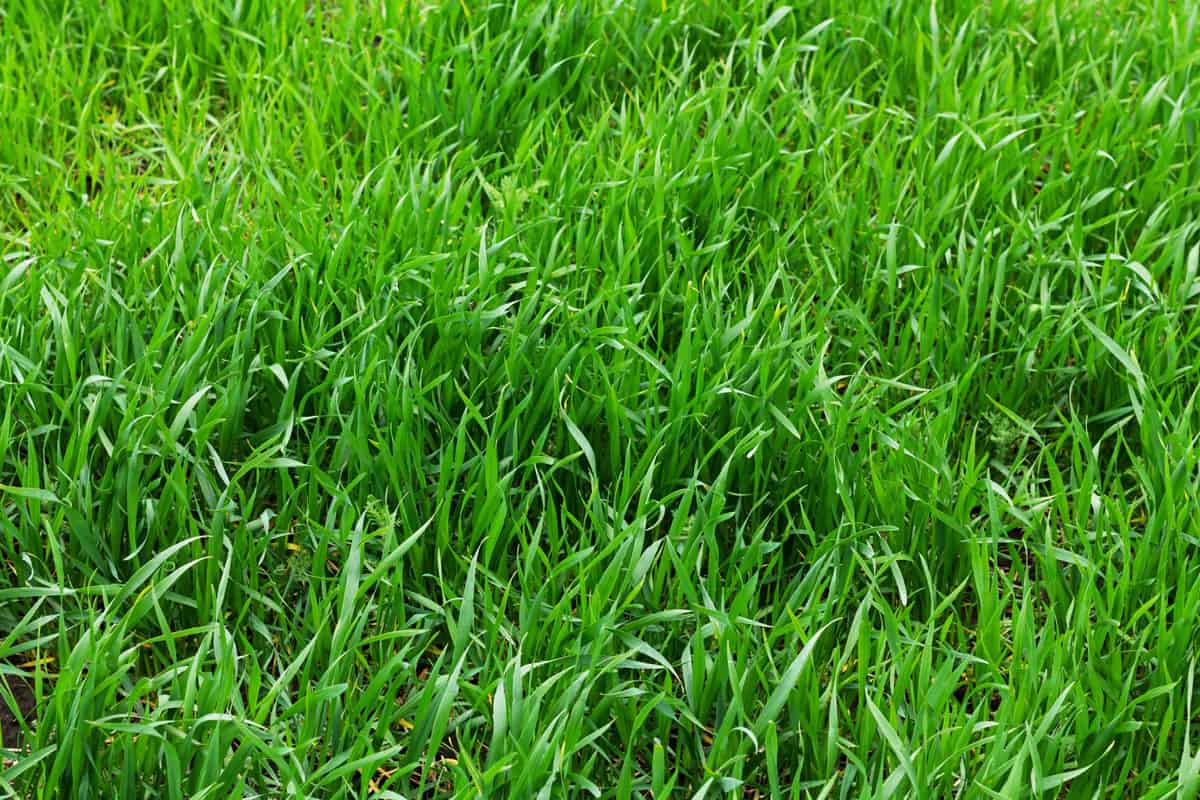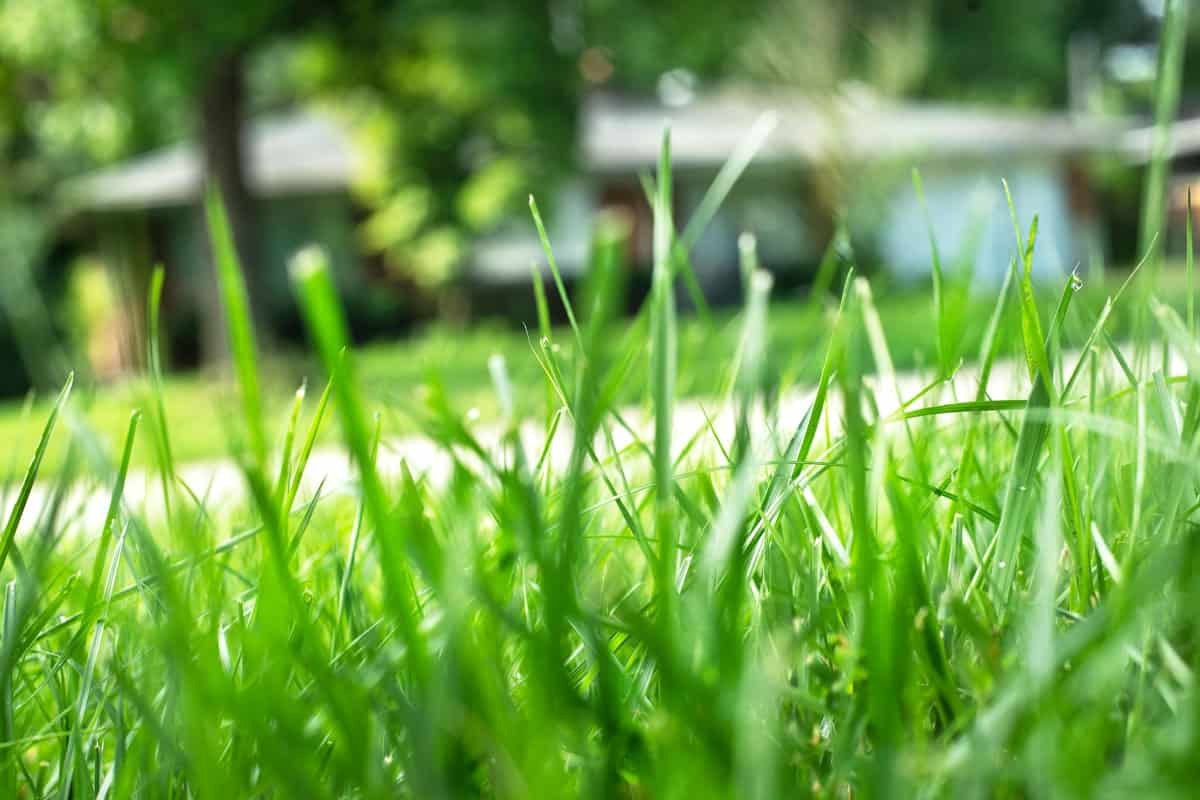Figuring out the best type of grass for your lawn isn't always easy. For example, do you have high traffic in your garden and do not know if you can grow grass? Is tall fescue a grass variety that can hold up against traffic? Is it easy to grow and maintain?
Well, we've done plenty of research into this question and have the answer below!
Tall fescue is a great grass type for higher-traffic lawns and gardens. Generally, this grass holds out well against foot and equipment traffic, as well as fluctuating weather.
Fescue, tall or short, tends to be a more resilient grass variety, making it perfect for non-conventional spaces. This turf grass is also one of the most drought-tolerant, so it's impressive for many reasons.
As we start this article, we will cover all things growing tall fescue in high-traffic gardens and discuss how to keep it green and healthy. Whether you go through your lawn to reach the guest house, pool, or shed or have other traffic causes, we're here to help. With that said, let's dive right in!

Is Tall Fescue A Good Grass For High-Traffic Areas?
Overall, we would agree that tall fescue is good for high-traffic gardens. Generally, this grass type has course, sturdy blades that enable it to fend off foot and equipment traffic better than other grasses.
You can also expect tall fescue to have deeper roots, which helps with high traffic. The stronger a grass variety, the better it can manage being crushed regularly.
In addition, tall fescue adapts well to changing conditions. For example, if you have grass somewhere with drought, it won't die off as easily as most grasses.
Tall fescue can handle temperature drops, rises, and water levels fluctuating with no problem. On top of that, tall fescue is also pretty easy to care for, as it takes care of itself for the most part.
Lawn Love explains how many gardeners choose tall fescue because it can withstand heavy foot traffic. So, we would say this is your best bet if you're worried about too much foot and equipment traffic.

Can Tall Fescue Tolerate Equipment Traffic?
Yes. Although no grass can withstand heavy equipment and vehicle traffic, tall fescue will hold out pretty well. As we said, this grass is coarse, making it more durable.
However, you don't want to park your mower or other lawn care tools/equipment on top of fescue for long periods. They will cover the grass blades below, blocking the sun, water, and nutrients.
You often want to keep heavy machinery off the grass unless you're using it. For example, if you're using a tractor or ATV to spread seeds, we recommend avoiding too much time on your tall fescue.
The same goes for the lawn mower. If you need to cut the grass, get the job done and park your vehicle somewhere off the lawn. Doing this will prevent patchiness and unhealthy turf.
You also don't want to park your car, boat, or golf cart on tall fescue/any grass, as this will kill it over time. Too much weight isn't suitable for your grass blades.
Instead, we recommend paving part of your lawn for parking or investing in a barn/shed.
What Are The Benefits Of Growing Tall Fescue Grass?
If you're on the fence about planting tall fescue grass, it comes with many benefits. Besides being durable and better suited for high-traffic gardens and landscapes, you can expect tall fescue to:
- Handle periods of drought and heat well
- Improve your lawn's overall durability
- Be lower maintenance than other grasses
- Grow in all types of soil (loamy, sandy, clay)
- Quickly fill out a plot of land
As we mentioned, fescue generally tends to be a top choice for gardens. Tall fescue should grow rather nicely whether you're somewhere with difficult soil, heavy foot traffic, or drought.
Many experts also rave about tall fescue being fast to grow and fill out patchiness in existing lawns, so that's a major bonus. Sometimes, people mix more than one grass type in a given turf to create a stronger, healthier lawn, so that's worth considering.
On top of that, you can also expect tall fescue to grow in "bunches," which helps with overall durability. Grasses with thicker clustering will often withstand the elements better than single, sparse blades.
Like any situation, there's more power in numbers: which also applies to your lawn.
Does Tall Fescue Make A Nice Lawn?
Yes, tall fescue should make for a nice lawn. Generally, this grass type is thick, green, and easy to manage, which can make a big difference in your landscape.
Furthermore, tall fescue grows in clusters, which can help fill your lawn faster than other varieties. On top of its thickness, tall fescue quickly grows and matures, which plays into its traffic tolerance.
According to Pennington, unlike regular grasses, tall fescue can handle factors like cold, heat, drought, and shade, which is not always the case for most turf grasses.
Interestingly enough, you can also use tall fescue along with other existing grasses to improve your lawn's overall resilience to unforeseen conditions and climates.
So, think of this variety as one that works alone and with others quite well. For example, if your current non-fescue grass looks like it needs a boost, we recommend overseeding with tall fescue.
Scotts Turf Builder Grass Seed Tall Fescue Mix
This tall fescue grass seed helps build stronger lawns, needs partial shade-full sun, grows deep roots, covers up to 10,000 square feet, resists most diseases, and comes in a 40-pound bag.
Check out this grass seed on Amazon.
What Is The Strongest Grass For Lawns?

One of the strongest grass types for a lawn is fescue. Additionally, many people see success with sports-turf grasses like common Bermuda, hybrid Bermuda, or Zoysia.
That's because these grasses are good for traffic and overall maintenance. With that said, of these grasses, tall fescue seems to win for overall strength and traffic resistance.
As we covered, tall fescue grows in clusters, which is perfect for higher-traffic situations. Therefore, by its physical structure, you can depend on it better than other types of grass.
Moreover, not all grass grows the same throughout the United States. Some grasses may be more resilient to traffic in different zones that better suit them.
Therefore, it can be difficult to have a definitive "best" or "strongest" answer to these questions. Tall fescue is very impressive, so we recommend it to most gardeners.
Is It Better To Stay Off Your Grass?
When it comes to staying off your grass, this can depend. Most times, too much traffic and activity on a lawn will cause it to thin out. However, walking on a lawn and enjoying it without noticing issues is expected.
As we mentioned earlier, one factor that can quickly turn a beautiful lawn into a patchy mess is vehicle and equipment parking/traffic. Typically, the more time your grass is covered or crushed, the less healthy it will be.
So, if you want to avoid issues in the future, we recommend keeping heavy things off your turf. Foot traffic is debatably bad for grass, but this depends on the amount your lawn gets.
For example, if you and the family want to play sports or set up a picnic on your lawn, this won't cause any issues. In contrast, building a fort or leaving items on the grass for weeks at a time might lead to patchiness.
Luckily, tall fescue should be able to combat this, but it still needs oxygen, nutrients, sun, and water. Without these factors, you can't expect any type of grass to be successful.
Can I Add Clover To Tall Fescue Grass For High Traffic?

Yes! A common practice for gardeners is adding clover within a fescue lawn to help with traffic and fullness. Even though clover isn't grass, it does grow green and fills out patches in turf.
You can plant clover seeds in sections of your lawn that experience more traffic to keep them green year-round, so this is similar to using fescue for the same thing in an existing lawn.
According to Deer Creek Seed, clover and tall fescue are a match made in heaven, as they both are incredibly resilient to heavier-traffic situations.
They also mention how clover works nicely with other grasses, like Kentucky bluegrass and perennial ryegrass. Clover is also beneficial within your grass because it grows low.
That means less mowing on your end, or at the very least: less noticeable differences between your tall fescue and clover.
Again, the best way to do this would be overseeing, so repairing your lawn won't be too difficult or time-consuming. Just remember to keep a healthy balance of tall fescue and clover, ideally with slightly less clover overall.
You don't want your lawn to be over-filled with clover, as they can produce white flowers that are more noticeable within a turf.
To Wrap Things Up

Whether you have tall fescue currently or need a new idea for your high-traffic yard, we found this to be a great idea. Since tall fescue is coarse and has deeper roots, you can expect it to withstand traffic better than ordinary grasses.
Generally, traffic (foot or equipment) will take a toll on your lawn. This applies to all grasses, fescue or not, so you want to practice good gardening and storage. For example, we recommend parking all heavy lawn equipment off your grass and in the garage/shed/or somewhere with pavement.
It's also nice to mix tall fescue with other grasses to improve your lawn's overall appearance and add clover to your fescue for the same effect!
Made it this far? Check out these helpful related articles below:
How To Grow Grass In High Dog Traffic Areas

